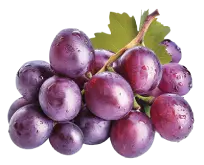
As promised in the previous Market Insights blog, this is the second part of my coverage of the webinar, “Fruit in Pet Food Formulations: Nutritional Benefits & Trends”. It will dive into the nutritional portion of the webinar presented by Matt Panasevich, Ph.D., Senior Nutrition Scientist, Blue Buffalo Co., who discussed the use of fruit and fruit fiber in pet food applications. As a bit of background, much of Dr. Panasevich’s career has been spent in nutrition research and the qualification of novel ingredients for use in pet food processing. Currently, in his role at Blue Buffalo, he investigates the application of novel nutritional technologies and their potential impacts on companion animal health.
While Dr. Panasevich included detailed technical information during his presentation, I’m just going to give you a topline summary. Before I get started with my abridged highlights, let me share the results of a live poll we conducted during the webinar. Participants were asked, “what is your favorite fruit to feed to your animal”?
Top Answers
- Berry
- Blueberry
- Apple
- Cranberry
- Pear
As you might have guessed, mine is apple.
Presentation Highlights
Fruit’s role in health & disease prevention
The top two reasons for using fruit in pet food applications are:
- Fiber
- Antioxidants
Different Functionality of Soluble and Insoluble Fibers
Fruit is an excellent source of fiber, which contributes to gut health. It also contains antioxidants, e.g., flavonoids, polyphenols, phytonutrients, and vitamins. These are the same attributes that are cited regarding human nutrition. And, as noted by Dr. Panasevich, these are underdeveloped areas in both animal and human nutrition.
Fruit has different types and amounts of fiber, depending on the variety. Fiber is indigestible in the stomach and small intestine. The two main categories of fiber are soluble and insoluble. An insoluble fiber can provide fecal bulk, dilute calories and lower gastric rate. Soluble fiber is generally more fermentable and contributes to the production of short-chain fatty acids (SCFA). These SCFA have numerous benefits for overall gut health from being an energy source to supporting immune function.
Fruit Formulating Benefits
As noted by Dr. Panasevich, fruit fibers can be a great source of soluble and insoluble fiber in pet food formulations to promote gut health because of their favorable fermentation characteristics.
- Even at higher concentrations of fruit fiber in pet food formulations, minimal impacts were observed in food intake.
- An effective dose of fruit fiber is reached when the benefits of gut fermentation are achieved without detriments to nutrient digestibility, stool quality, or palatability. This requires evaluating the ratio of insoluble to soluble fiber in a finished product.
Antioxidant Advantages
Fruit is an excellent source of antioxidants, e.g., flavonoids, polyphenols, carotenoids, vitamins C and E. Panasevich says the antioxidants in fruit slow oxidative damage to cells by scavenging free radicals, which are unstable molecules the body produces. Common oxidative stressors for pets are the product of living in an urban environment – air pollution, noisy environments and crowding.
Levels of antioxidants in fruit vary by type. Different levels of phenolics, flavonoids and anthocyanins impact antioxidant capacity, says Panasevich. These have direct effects on antioxidant systems in cells of different tissues, i.e., brain, liver, skeletal muscle. For example, there is evidence that polyphenols can improve cognitive outcomes. Anthocyanins, such as those found in blueberries and strawberries, can cross the blood-brain barrier into the cortex and hippocampus and impact cognitive performance.
Formulating takeaways
- Fruits are good sources of antioxidants.
- There is evidence the antioxidants in fruit work in isolation and in combination with other diet components for disease prevention and to support well-being.
- Processing impacts concentrations of bioactive components in fruit, especially harsh processing. Preserving the “bioactives” in fruit helps with their efficacy.
Tree Top offers a wide range of fruits in various forms, so if your next project calls for the possibility of fruit, please contact me 509-698-1435. For additional information on the benefits of fruit, please review our white papers on the subject, “Combating Oxidative Stress in Companion Animals”and “Fruit Adds A-Peel to Pet Food Formulations.”
To view this webinar in its entirety, click link: “Fruit in Pet Food Formulations: Nutritional Benefits & Trends”
Don’t miss next month’s blog, I am going to reveal my top picks for 2021 pet food trends.




